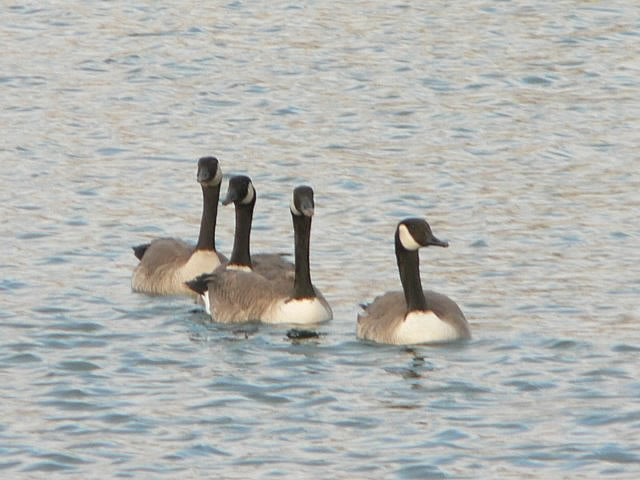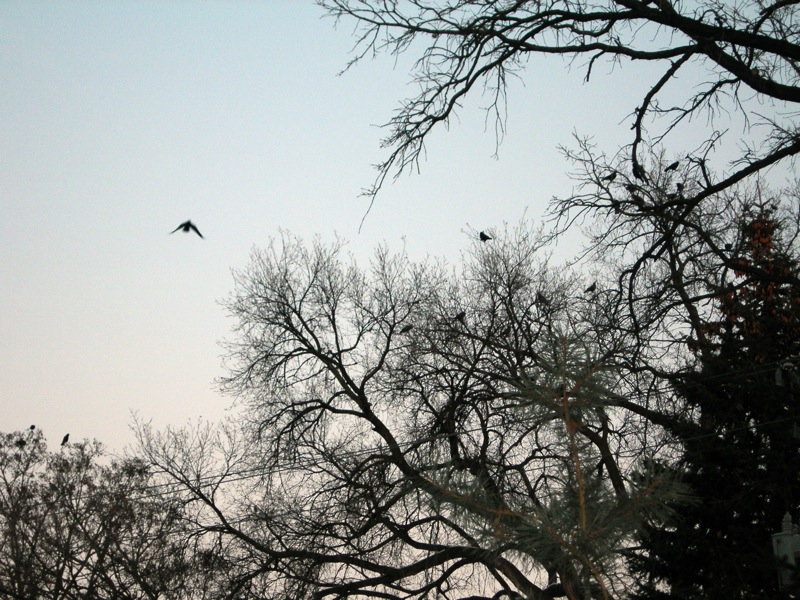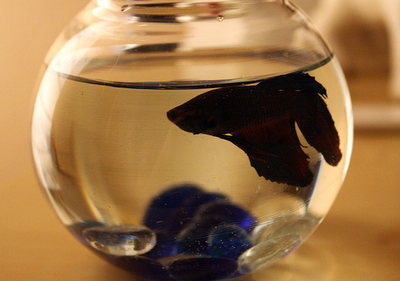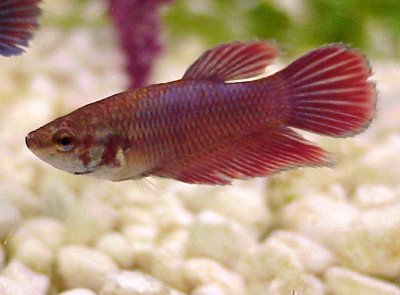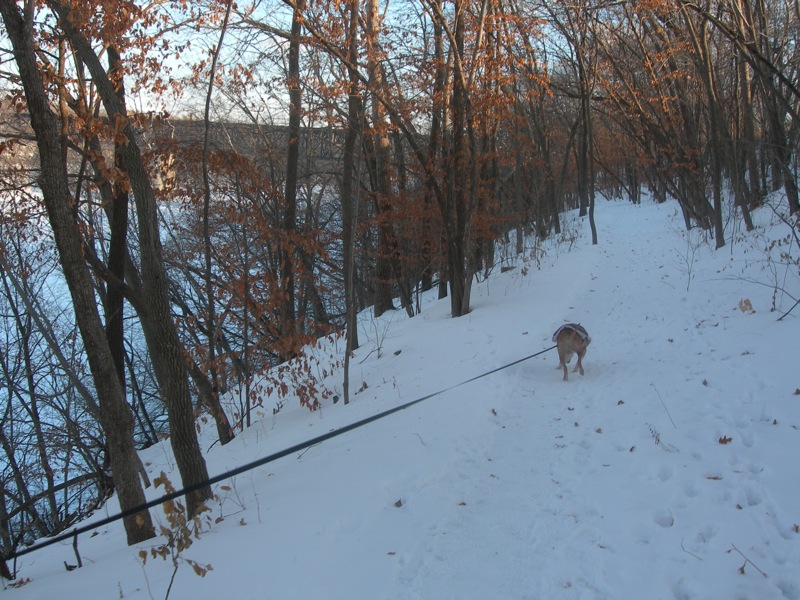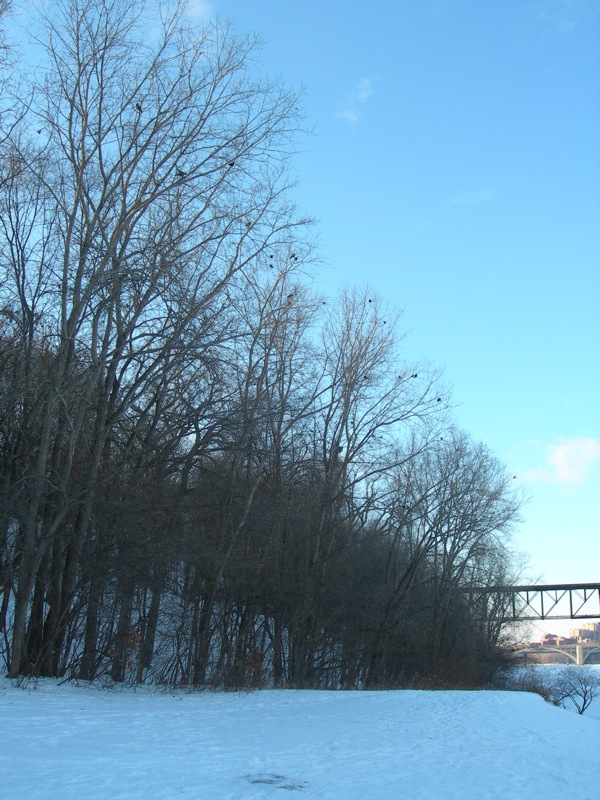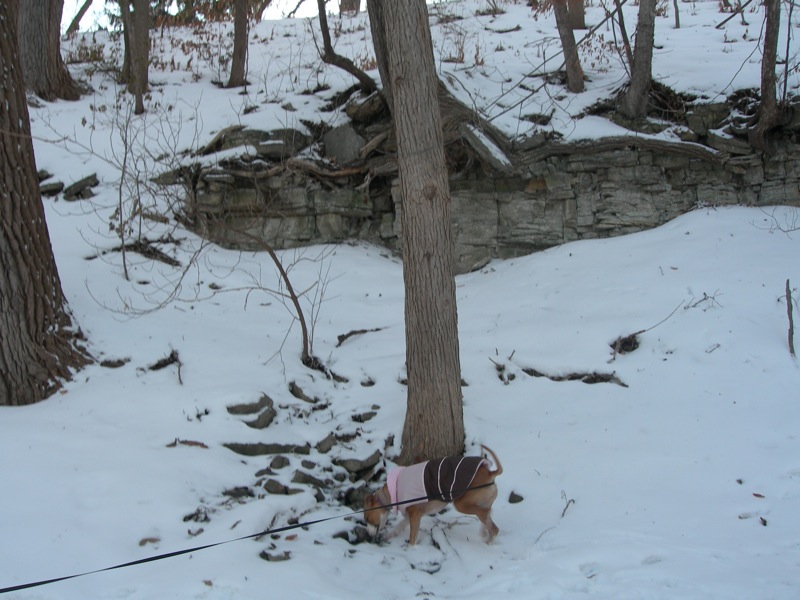Howdy y'all! I hope you all had a great weekend!
Wildlife news:
The Fish Empathy
quilt. As an omnivore I'm not really against fish consumption. Especially when I see the cannibalism that sometimes occurs in my own aquarium! But resource management must be used in the fishing industry; some areas/species are becoming dangerously overfished.
More fishy news; a rock climbing
catfish?!
Life on
Mars?
Today's Critters and Kids feature is dedicated to Baby C! As you can see, Baby C happens to be adorable:

Approaching eight months of age, Baby C is an active baby. Her hobbies include napping with Mom, being flown around like an airplane with Dad, sitting up, considering crawling, sweet potatoes and her pet giraffe, Sophie:
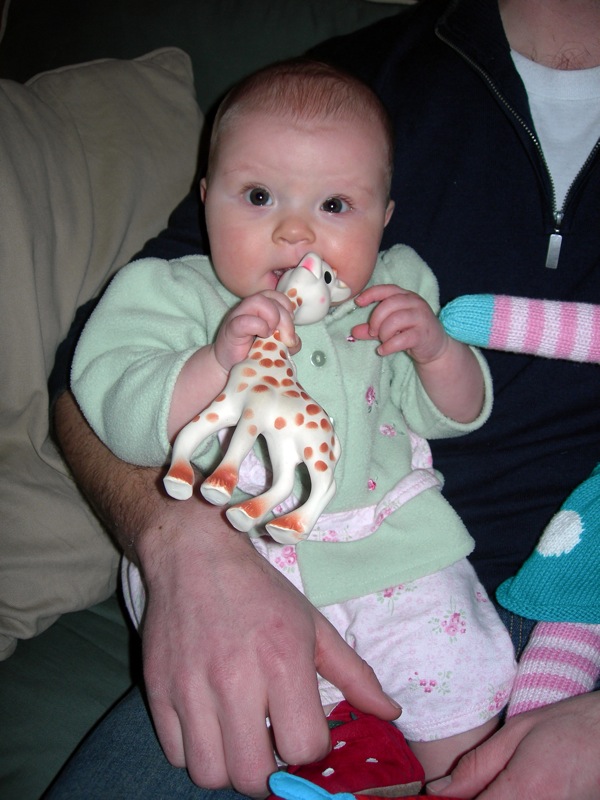
I think Baby C's pet is an excellent excuse for us to feature this amazing African mammal, the giraffe!
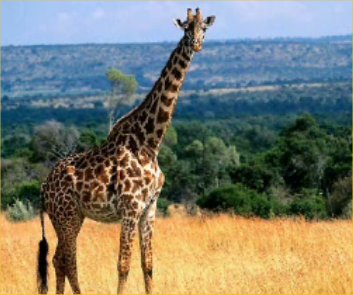
Giraffa camelopardalis was given its Latin name from the old belief that it was a cross between a camel and a leopard. Now we know that giraffes are even toed ungulates, like many deer and antelope, although they share their family with only one other relative, the okapi:

In addition to being the world's tallest mammal, giraffes are the world's biggest ruminants, or cud-chewers. Like cows, giraffes have four stomach organs to help them digest the tough leaves and twigs they have for dinner.
Giraffes can grow up to 18 feet tall and weigh between 2500 and 4000 lbs. Females are smaller than males and there are nine varieties of giraffes spread throughout south central Africa.
Acacia trees are a favorite of these tall guys, and the giraffe's nimble tongue pulls the small leaves off the branches - up to 140 lbs of leaves a day! Giraffes have tough molars to grind the thorns of these trees. Okapis possess an even longer tongue than giraffes, being the only mammal that can clean the inside and outside of its ears with its big blue tongue! Evidence of the giraffe's wet-willy potential:
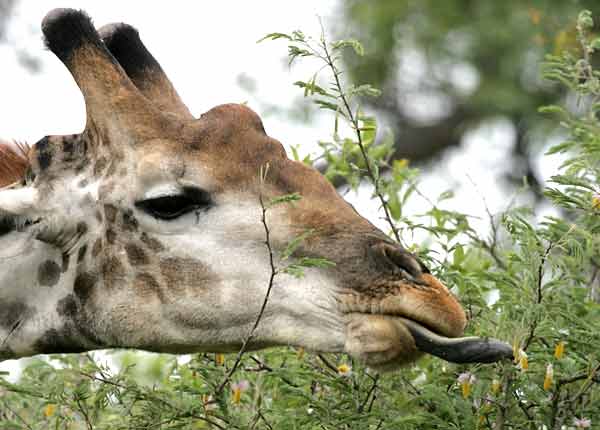
Even though giraffes only have seven vertebrae, just like us, they have other unique features. Giraffe (and okapi) "horns" are called ossicones. Unlike antlers, which are made of bone, ossicones are formed from cartilage. One way to tell the gender of a giraffe is to look at the skin and hair covered ossicones. Males "horns" (above in the tongue picture) are often bald, with the hair tufts worn off from fighting with other boys. Girls ossicones are hair covered:

In order to keep blood pumping through its giant body and all the way up to its brain, giraffes have very high blood pressure. An adult has a heart that is nearly two feet long and that weighs 22 lbs! The legs of the giraffe have very thick, tight skin to prevent this high-pressure blood from leaking out of their capillaries. A network of blood vessels called a rete mirabile (miraculous web) prevents too much blood collection in the giraffe's brain when he bends down to drink. This same type of venous web helps prevent waterfowl and penguin legs/feet/beaks from freezing in cold water.
Giraffes form loose herds arranged by gender; usually females and female calves stay together, with young males grouping separately. Older males may roam alone. Giraffes are not territorial and are often preferred company for wildebeest, other antelope and zebras, who rely on the taller mammal to spot danger far away.
In the mating season, male giraffes often fight each other by "necking", which is the act of swinging their heads and necks around to hit each other. These attacks can occasionally be fatal.
"Ew, gross!" Fact: Male giraffes taste the females urine to determine if she is in estrus!
Like some other animals (bonobo chimpanzees, seals, deer), male giraffes mount other males quite frequently.
After a male/female pairing, a giraffe calf is born after 14 or 15 months gestation. The momma giraffe gives birth walking or standing up, and often the umbilical sac bursts upon the calf hitting the ground, two meters down! Baby giraffes start walking and nursing at 15 minutes of age.
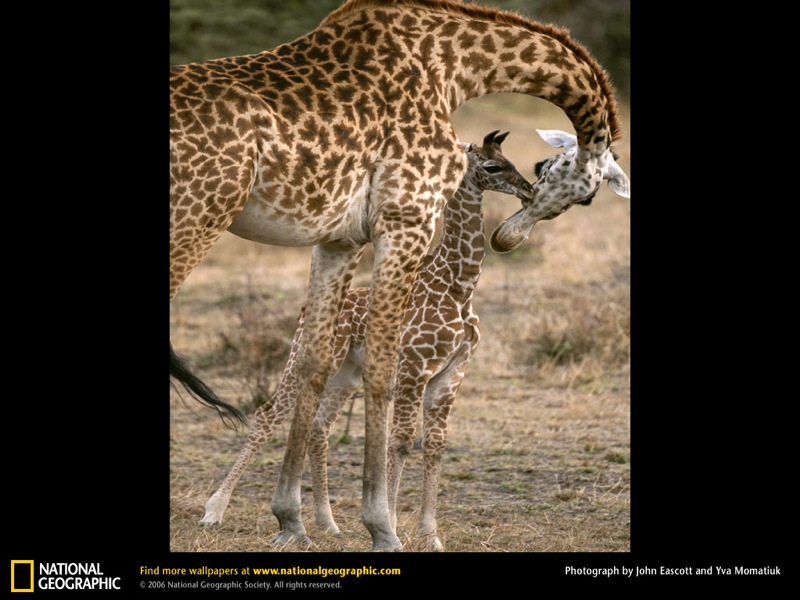
While adult giraffes are safe from most predators except lions, unfortunately it is baby giraffes that are the most vulnerable to predation. Hyenas, panthers and alligators often take giraffe calves. Only 25 to 50% of giraffes make it past their first year.
Thankfully, many of the varieties of giraffes are protected in Africa's giant nature preserves. Their height helps them survive when domesticated animals enter their territory, as they can reach the tops of trees for food. Like many animals, giraffes are threatened by poaching and loss of habitat.
But I think Baby C's giraffe Sophie will remain quite safe!
Hugs n snuggles to Baby C...and everyone else too!
Wendell!











